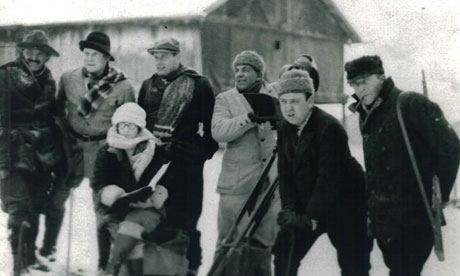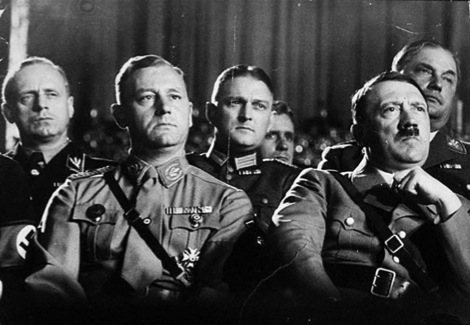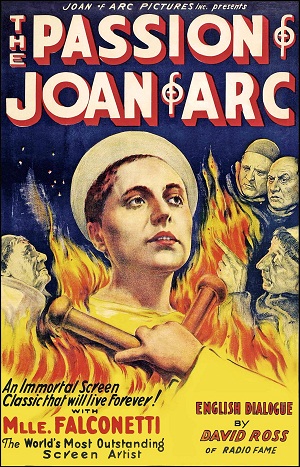
Who made the better Gatsby? Did DiCaprio pull off a pink suit as well as Robert Redford did in Francis Ford Coppola’s 1974 adaptation? There is another version of The Great Gatsby, although we won’t be making any comparisons with it because the 1926 silent film by Paramount Pictures has simply ceased to exist. Very few are even aware of the original screen adaptation of F. Scott Fitzgerald’s classic novel and all that remains of the original 80-minute film is this one-minute trailer:
Scott and Zelda themselves saw the film and in an undated letter, Zelda allegedly wrote: “We saw ‘The Great Gatsby’ in the movies. It’s ROTTEN and awful and terrible and we left.”
Perhaps a forgettable film, but not the reason why it was physically forgotten. The first Great Gatsby is just one of countless films that have vanished, “gone missing” and no longer exist in any known film archives or private collections. In fact, more American silent films have been lost than have actually been preserved and more than half of sound films made in the U.S between 1927-1950 vanished too. It’s estimated that more than 90% of films made before 1929 are no longer in existence.

The Academy’s Lost Films…
Amazingly, an Oscar nominee for Best Picture in 1928, The Patriot, and The Way of All Flesh, for which Emil Jannings won Best Actor in 1927, are both counted among films lost in time.
The British Film Institute even made a list of the 75 “Most Wanted” lost films. At the top of the list is Alfred Hitchcock’s 1926 silent film, Mountain Eagles, which went missing during his lifetime.

Hitchcock filming The Mountain Eagles, courtesy of the Academy of Motion Picture Arts and Sciences
Sabotage…
Hitchcock himself apparently hated the film so much that he said he was glad it was gone– making its disappearance even more suspicious. He wouldn’t have been the first filmmaker to have destroyed his own work. After director Robert Hartford-Davis’ Nobody Ordered Love (1972) was poorly promoted and critically panned, all known copies are believed to have been destroyed upon his death at his request, and the film is now also listed on the British Film Institute’s Most Wanted list.

Overly self-critical directors however, is not the leading cause of motion pictures disappearing. In many cases, these films were destroyed in fires. Before 1952, the 35 mm negatives and prints used a highly flammable and chemically unstable nitrate film. At Fox Pictures in 1937, a storage vault fire destroyed the entire archive of original negatives from their pre-1935 movies.
Nitrate film depends on a storage environment with low humidity and low temperatures with adequate ventilation or it will decay or literally disintegrate into a powder akin to gunpowder, ready to spontaneously combust.

Sadly, the largest cause of film loss was actually by deliberate destruction. Storage vaults and conditions as the ones described above were predictably expensive and as the era of silent film was coming to an end, its films didn’t have much commercial value for the big studios. Remember, this was before the days of television and home video when movies could be seen again and again, still sending money into producers’ pockets years later.
So the studios intentionally binned them. Many were melted for their silver and some were broken up into short clips and sold as novelty items to film-lovers who would play their favourite movie scenes on home projectors at parties.
To grasp just how many films of this era were destroyed, we must consider Theda Bara, the best-known actress of the early silent era. She made 40 films including the original Cleopatra and Romeo and Juliet.
Only three and a half of those survived.
This careless loss of cinema didn’t just happen in Hollywood and the British film industry. The world’s first-ever animated feature film with sound, an Argentinian production called Peludópolis was lost, as well as two iconic Japanese monster flicks, preceding Godzilla by more than a decade. In 1967, an unofficial but popular Batman Fights Dracula, was made in the Philippines without the copyright permission of DC comics. This great contribution to cinematic history sadly did not survive either!
Censorship was also the cause of films going missing, especially during wartime. In 1938, the Nazi regime got their hands on Nad Niemmen, a highly praised film adaptation of a classic Polish novel. Although the Nazis seemed to appreciate the artistic value of the movie, they could not allow the screening of a picture so firmly rooted in Polish history. It was dubbed and re-edited to serve as pro-German propaganda. Polish underground resistance took the remaining original copies of the film and hid them in the winter of 1939. They have never been found.
The Lost Film that was Found in a Janitor’s Closet
There is a happy and rather remarkable ending however, for a very famous French film that was censored, destroyed and seemingly lost forever until it turned up in a janitor’s closet in Norway decades later.
The Passion of Joan of Arc, underwent several cuts by order of the Archbishop of Paris and again by nationalist government censors in 1928. The film’s Danish director, Carl Theodor Dreyer, had absolutely no say in the cuts. Their reason? Dreyer was not Catholic and not French and “to let this be made in France would be a scandalous abdication of responsibility.” Later that year, the film’s original negative was destroyed in a fire. Dreyer was able to patch together a new version of his original cut using alternate takes but shockingly, this version was also destroyed in a lab fire in 1929. Copies of Dreyer’s second version were almost impossible to find and the original was believed to be lost forever. After his death, Danish filmmakers attempted to cut together scenes from different available prints and create a version as true to his original cut as possible, but in 1981, the impossible happened.
An employee of a mental institution in Oslo, the Dikemark Sykehus, found several old film canisters in a janitor’s closet labeled as The Passion of Joan of Arc. They were sent to the Norwegian Film Institute but gathered dust there for three years before someone finally examined them and discovered that they were indeed Dreyer’s original cut prior to the government and church’s censorship. No records have been found of the film’s shipment to Oslo, but it’s believed the director of the institution, who was also a published historian, may have requested a special copy for safekeeping.
Don’t assume however, that your favourite films are safe just because we’ve updated things since the 1950s. As recently as 1987, a Quentin Tarantino film, My Best Friend’s Birthday was partly destroyed in a fire and only 36 minutes of the 70 minute-long film survived. Tarantino is rumoured to have kept what remains of the film in his possession.
Scandalously, in 1980, Paramount tried to have all copies of James Dearden’s film Diversion destroyed after they bought the rights to remake it as Fatal Attraction.
So, are you still as eager to get rid of those VHS tapes gathering dust in the attic?!



















